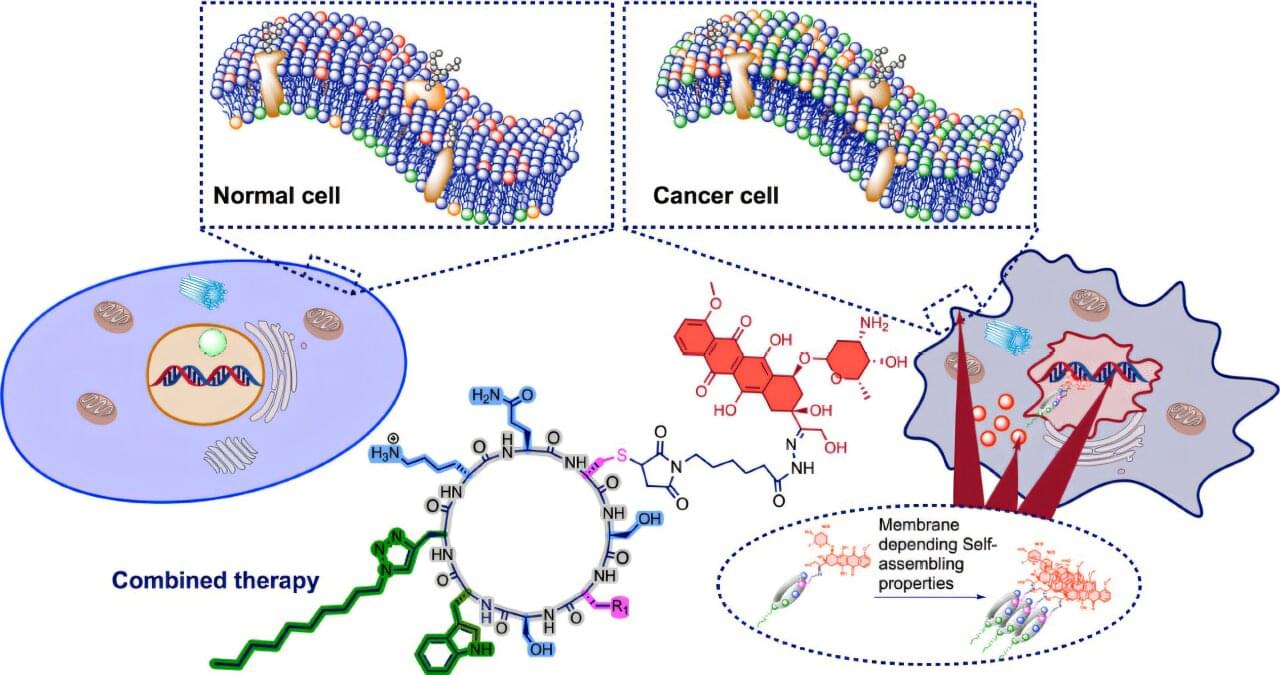A research team at CiQUS (University of Santiago de Compostela, Spain) has unveiled an innovative molecular approach that enables anticancer drugs to reach the nucleus of tumor cells, where they can exert their therapeutic effect. The study focused on doxorubicin, a widely used chemotherapy agent. Prolonged exposure to this drug often leads to the emergence of resistant cells, a major clinical challenge that this strategy successfully overcomes while preserving the drug’s antitumor activity.
The approach builds on a simple but powerful concept: the ability of cyclic peptides —small amino acid rings— to stack and self-assemble into hollow cylindrical structures (nanotubes) on the surface of cancer cell membranes. The system, developed by the team led by Juan R. Granja, couples doxorubicin to these peptides and directs it to the cell nucleus through a delivery pathway that differs from the drug’s usual mechanism. This allows the drug to bypass the cellular resistance mechanisms that would normally deactivate it.
Compared with healthy cells, cancer cell membranes contain higher levels of negatively charged lipids. The cyclic peptides used in this study display a strong affinity for these anionic surfaces, facilitating their interaction with tumor cells. As a result, the peptide–drug conjugates enter resistant cells and travel towards the nucleus, where doxorubicin intercalates with DNA to trigger its cytotoxic effect.
